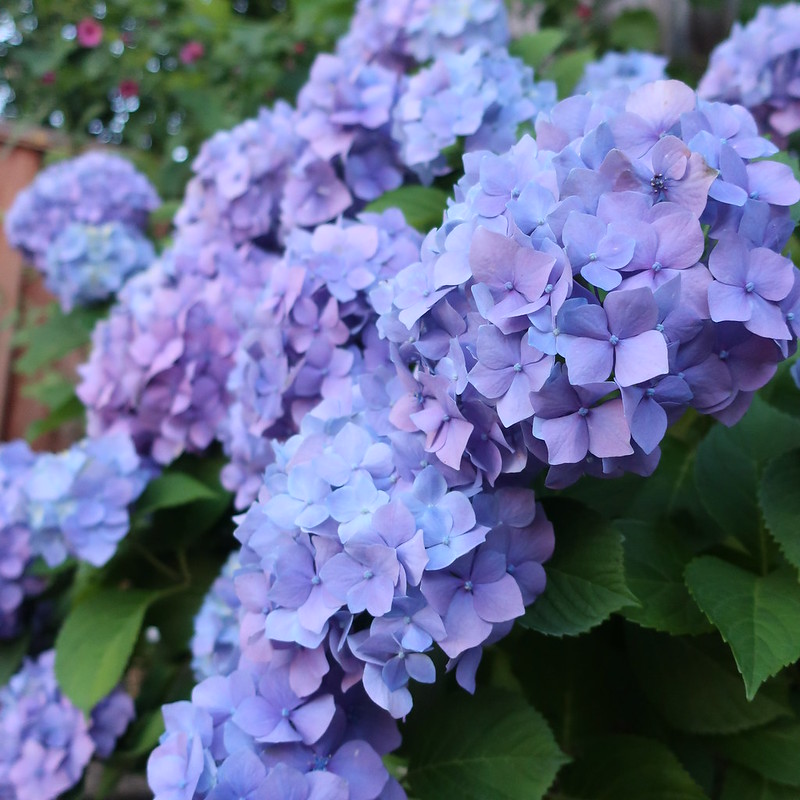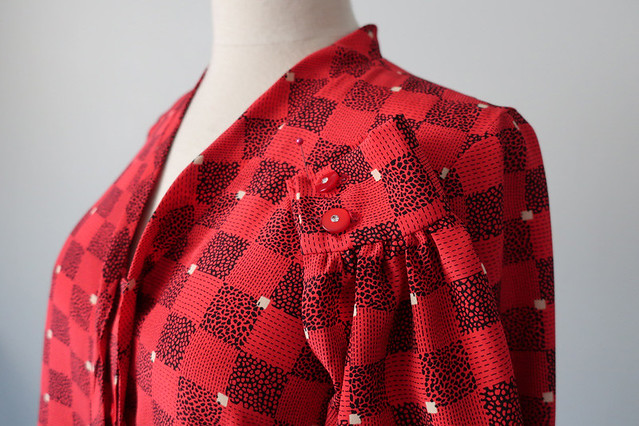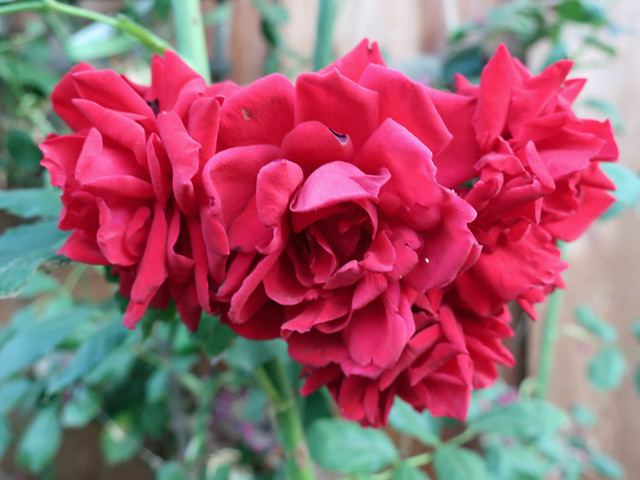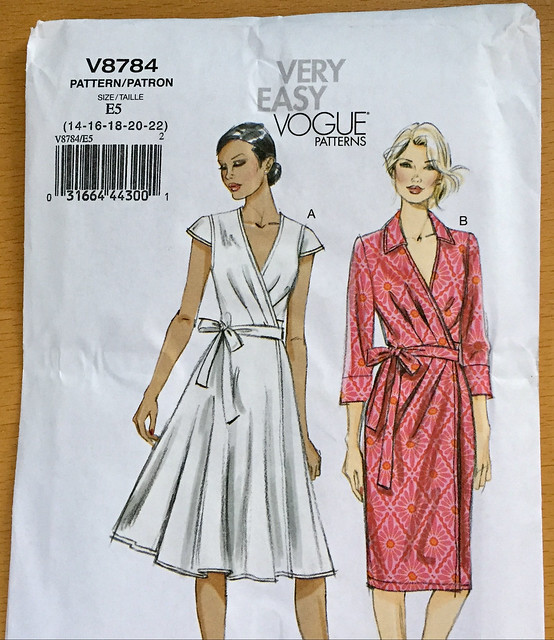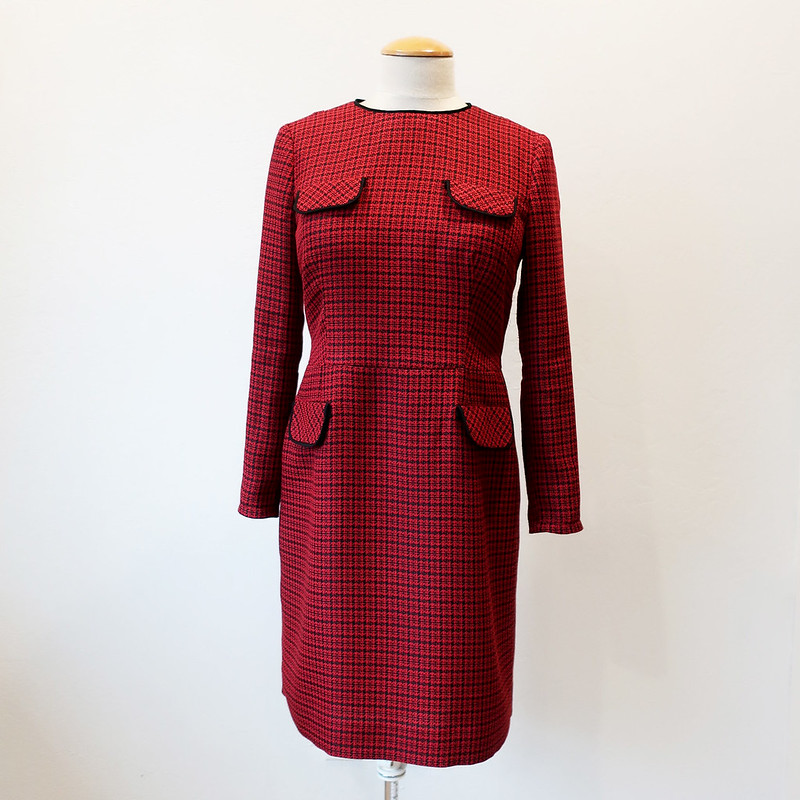How many blue items can one person have in their wardrobe? I laugh with Heather as no matter what we are looking for, she finds blue fabrics. Although I can't really fault her, because they work perfectly for her.
For this dress I have lots of photos and inside sewing looks, so if you like posts with a lot of sewing details then read on. Or at least scroll through and see the photos.
Starting with the finished look. I am so happy with this dress and the fabric is gorgeous. It is a fairly bulky wool but sewn up it makes a very sleek work dress in a color that suits her perfectly.

The fabric is from Britex, we bought it last spring and then I set it aside during our hot summer as nobody wants a wool dress around here in July. But once I finished the previous version of this pattern for her I thought it would be a good choice for this fabric as well.
Here's the link to that post, same pattern but made of a cotton sateen for a summer dress. If you are interested in pattern manipulation and redesign take a look, as I changed the armhole princess seams to shoulder princess seams. I think on her they give a nice vertical line, plus allow some smoother bust adjustment on that seam.

Sometimes a slightly thicker fabric is your friend - in that it sews quite easily, of course wool can be steam shaped and practically molded but it hides a lot of wrinkles or little shadows that might appear on other fabrics. Gosh I love this fabric and wanted to make a jacket - but she was set on a dress. In the end a good choice!
Sewing details. Starting with the basics - what color of thread to use?

I used the lilac thread on the left instead of the navy blue thread which might seem like the first choice. When sewing on dark colors I tend to use something a few shades away from the fabric color. Not wanting it to disappear - I want to see the stitches when I'm sewing and if you need to remove anything, that navy blue thread is not your friend. In most fabrics the thread in the seams will never show and why not make your life a little easier?
Next decision, interfacings.

Here's my little test sample. I put all the interfacing choices on a scrap of fabric. Then I sew some seams, add lining or other edge finishes just to see how everything goes together and which interfacing works best for the fabric. And even the location on the dress. Most garments are a mix of interfacings, I rarely use the same one on every part of an item. Here I determined that the fusible held the wool in shape, kept it from stretching at the neckline but it didn't give the crisp edge that was needed on that neckline and the center V. So I added silk organza and that combo worked beautifully.

This is the center front of the dress. I did all the work on that center front, both to stabilize and sew the front seam before attaching it to the side panels. That way it's locked down and not going to change shape as I work on the rest of the dress. Blue painters tape on every piece of this, on the wrong side, which just makes it quick to know right/wrong side and not mix anything up. I put the tape pieces on as I cut out and while I'm doing my tailor's tacks.
I love it when I learn a new technique!

I saw
this method on the Threads Magazine website (I think). A slightly different way of putting in an invisible zipper - you baste the center back seam closed, baste the zipper to the seam allowances, then stitch it in. This method allows you to have the bottom of the seam already stitched up as opposed to going in after the zipper is sewn in and doing that part of the seam. On the right I haven't pressed the seam so it still shows a bit.
Here's the finished zipper. I'm finding this dress form that I made a while ago in Heather's size somewhat useful - it's a tiny bit off in some areas - I think I overstuffed it. But the bigger issue is that it's tilted and I can't really fix that without taking it all apart.



I did make a walking vent in the bottom of the dress, which isn't necessary for striding actually, but I always think it looks nice and helps when you sit down so that there isn't pulling around the hem. We took these pictures around 3 in the afternoon on Sunday and the sky was so clean and blue after a few days of rain. Such a change from the previous week.
The last version of this pattern was sleeveless so for this one I needed to figure out a sleeve pattern piece and ended up making my own. I follow a few Russian dressmakers on IG (whew their talents are amazing!) and saw a quick video on how to draft a sleeve that made so much sense. So I tried it and perfection. I will never stress about a sleeve again. Maybe 😌. In any case I will try to post how I did it on my next Random Threads post.
Here's my test sleeve using a scrap of wool. This is hand basted in but I thought it was great so onward with cutting it out in the actual fabric.


There's a peek at the lining, the dress is fully lined to the edges including the sleeves, which have a slight pleat at the hem edge in the lining for movement. Hand sewn there at the sleeve hem.
I had to guess on the sleeve length but looking at the proportions on the dress form I just picked a length and it worked out. The goal was a short sleeve but not a cap sleeve, and a slim fitting sleeve. It needed less width than I thought to fit into the armhole nicely. There is very little sleeve cap ease which works well in this wool bit still allows for fit around the arm and also comfort.


Wool dress completed and ready for winter. I guess some people don't like to wear wool, too itchy, allergic or even too warm for them? But I love it and it sews so beautifully.
Next up I have completed 2 other items for Heather including the silk wrap dress and a blazer jacket. I hope you like seeing things I sew for her - I've received some lovely emails to the effect that it's interesting to see garments sewn for a variety of shapes and I agree. I'm always looking online to see new techniques or how things fit on various people.
As for selfish sewing, I made some jeans using the
Ash jeans pattern from Megan Nielsen. I chose a size based on my hip/waist measurement, decided to sew them up exactly as instructed and they fit perfectly. Kind of amazing! I can't guarantee that would happen for anyone else but I struck lucky on this one. I like that this pattern has 4 variations, skinny, slim, straight and flare. Everything you could need! I'm teaching a
weekend jeans workshop at Hello Stitch on Jan 26-27 . By then I might have a few more pairs in my wardrobe. By the way you can use this Ash jeans pattern or any jeans pattern you have, like the Closet Case Ginger jeans, or Cashmerette, Deer and Doe, etc. It's flexible so if you already own a jeans pattern that's fine to use. I will post my Ash jeans in the next week or so.
Other projects in mind - I have some red print silk that is calling out to be a nice bow blouse for the festive season, I just finished a red plaid dress which also seems right for winter and I want to make a ponte knit turtleneck color-block dress with
McCalls 7430. Enough on my to-sew list, right?
Happy Sewing, Beth
Today's garden photo - a throwback to this past June when the hydrangeas were in full bloom.
